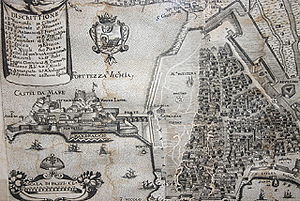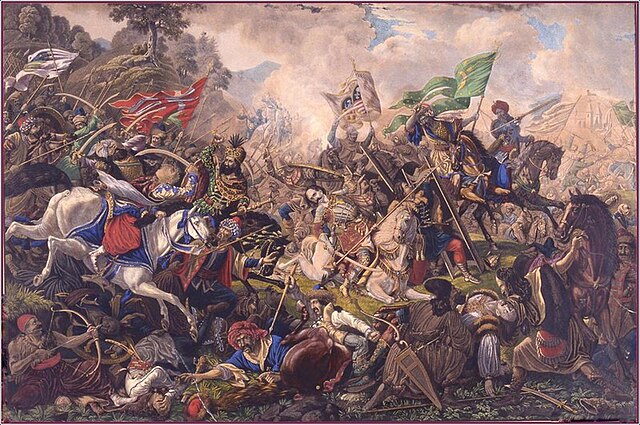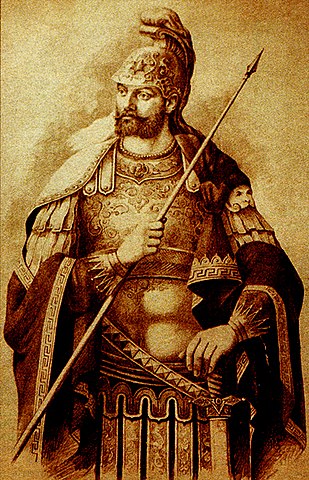The Ottoman Empire stood amongst the greatest empires of world history; it belongs to a select club of polities who were both vast in their scope, whilst simultaneously being extremely lengthy in their duration. The story of the Ottomans is a long and highly convoluted one; in the space of three centuries they rose from being a minor Anatolian Beylik to being the masters of an empire with lands in Europe, Asia and Africa.
The Ottomans were Oghuz Turks ethnically; the Oghuz had migrated from the central steppes of Asia during the 9th and 10th centuries, whereupon they crashed into the Middle East in the early 11th century, first conquering Persia, before proceeding to invade modern day Iraq, Syria and finally Anatolia itself, sweeping aside the local Arab and Byzantine rulers of these respective regions. Soon, the Seljuks, as they were known, had assembled for themselves a large empire. However, upon the death of Sultan Malik Shah in 1092, the empire quickly fractured, with a number of new polities arising from it, including the Sultanate of Rum and those of Syria and Persia.

The Seljuk Empire at its zenith in 1092
The ‘Beyliks’ were a crucial unit of the new Sultanate of Rum (the Turkish word for Rome, recognising the region’s heritage as a longstanding province of the Roman Empire); originally founded to defend the Seljuk border against the Byzantine Empire, they took on a new found importance with the establishment of the Sultanate of Rum. As the Sultan bickered with his counterparts in Syria and Persia (and found himself beset by Byzantine attacks and Latin crusades), the individual Beyliks, particularly those of western Anatolia, began to assert their independence from him. Among these was the Beylik of Sogut, ruled by Ertugrul Bey. When he died in 1281, he was succeeded by his son, Osman I, the first Sultan of what was to become the Ottoman Empire.
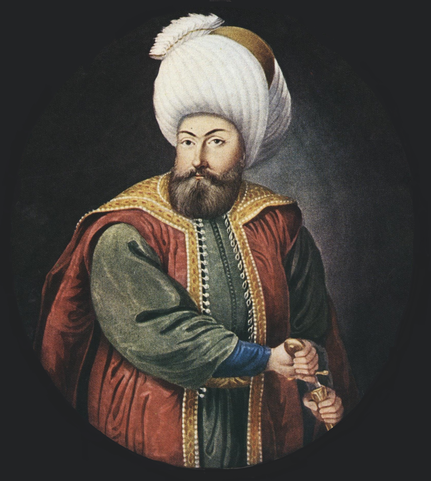
A later portrait of Osman I. Naturally, it is unlikely to be a credible likeness
It is said that Osman had a dream; a dream which foretold the flowering of a great empire from his tiny Beylik. The authenticity of this dream is certainly disputable; nonetheless, it shows the importance of Osman to the later Ottoman tradition. He would certainly prove himself to be a great warrior and leader, establishing firmly the independence of the Ottoman Beylik, and expanding its boundaries throughout Nicaea, driving the Byzantines from this region, and seizing key towns such as Bursa and Ephesus.
When he died in 1326, he was succeeded by his son Orhan, who would continue his father’s policy of expansionism, taking further lands in Nicaea. More importantly, Orhan was able to establish a bridgehead in Europe, which would serve as a launch pad for further Ottoman expansion in the Balkans and later Eastern Europe. It should be noted that Ottoman successes during this period were aided greatly by the severe erosion of the power of the Byzantine Empire, as evidenced by the decline in the quality of its army and navy, as well as the political chaos that engulfed it during the civil war between John VI Cantacuzenus and the regents of John V Palaeologus. This was a factor that the Ottomans would have no qualms about exploiting in the future.
Throughout the rest of the 14th century, the Ottomans went from strength to strength, with Orhan’s successors Murad I and Bayezid greatly expanding the Sultanate’s territory, at the expense of the decaying Byzantine Empire, as well as that of other Turkish polities. However, they were unable to seize the city of Constantinople, thus enabling the ‘Empire’ to cling on. Moreover, Ottoman expansionism was checked by the defeat and capture of Bayezid at the Battle of Ankara in 1402. He lost the throne, and a decade long interregnum was to follow, until, in 1413, Mehmed Celebi, one of Bayezid’s many sons, was proclaimed as Sultan.
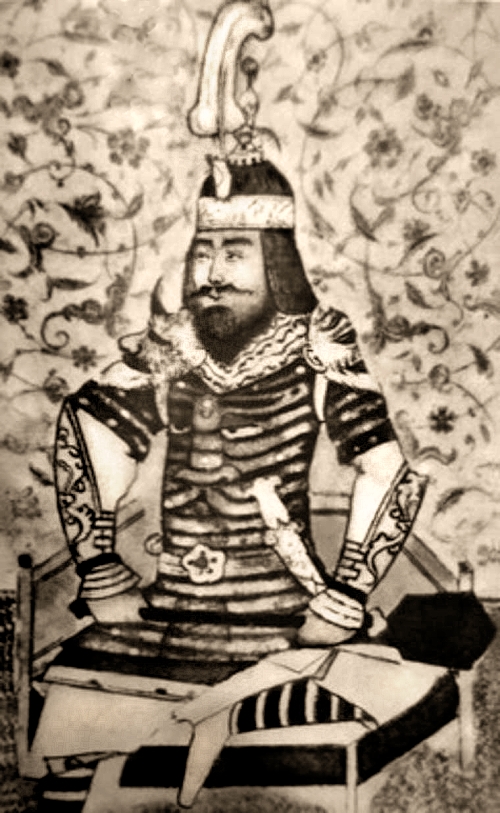
Timur 'the lame': the man who humbled the Ottomans
Mehmed helped restore the losses of the last decade, and was responsible for many changes, such as confirming the primacy of Edirne as the imperial capital. Nonetheless, his reign was short, and he passed away at a young age in 1421, to be succeeded by his seventeen year old son, Murad II. Murad, like his predecessors, saw his share of wild and bloody conflict during his reign, where he was forced to contend with both internal and external threats to his rule. As a result, he took the unusual step of handing over the reins of power to his young heir, Mehmed, who, at the time, was only twelve years old. It was under his rule that the Ottoman state began its final transition to the status of an Empire, and thus this is where our story begins.
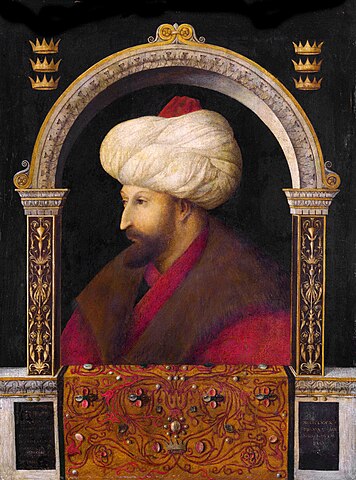

On the left, a later portrait of Mehmed II 'Fatih'. On the right, Ottoman territories at Mehmed's accession in 1444.
__________
So, this is my first AAR. A couple of things to note. Whilst I'm trying to emulate some of the very good historical AAR's on this forum (such as those by Volksmarschall), I am not a historian, and certainly am not one of the Ottoman Empire. Thus, whilst this will have a historical flavour, it will probably not be particularly historically accurate. Furthermore, my prose is dull, and I won't be interspersing it with too many screenshots (and those that I will add will almost entirely be maps). But, regardless, I hope that you find this AAR mildly entertaining .
.
The Ottomans were Oghuz Turks ethnically; the Oghuz had migrated from the central steppes of Asia during the 9th and 10th centuries, whereupon they crashed into the Middle East in the early 11th century, first conquering Persia, before proceeding to invade modern day Iraq, Syria and finally Anatolia itself, sweeping aside the local Arab and Byzantine rulers of these respective regions. Soon, the Seljuks, as they were known, had assembled for themselves a large empire. However, upon the death of Sultan Malik Shah in 1092, the empire quickly fractured, with a number of new polities arising from it, including the Sultanate of Rum and those of Syria and Persia.
The Seljuk Empire at its zenith in 1092
The ‘Beyliks’ were a crucial unit of the new Sultanate of Rum (the Turkish word for Rome, recognising the region’s heritage as a longstanding province of the Roman Empire); originally founded to defend the Seljuk border against the Byzantine Empire, they took on a new found importance with the establishment of the Sultanate of Rum. As the Sultan bickered with his counterparts in Syria and Persia (and found himself beset by Byzantine attacks and Latin crusades), the individual Beyliks, particularly those of western Anatolia, began to assert their independence from him. Among these was the Beylik of Sogut, ruled by Ertugrul Bey. When he died in 1281, he was succeeded by his son, Osman I, the first Sultan of what was to become the Ottoman Empire.

A later portrait of Osman I. Naturally, it is unlikely to be a credible likeness
It is said that Osman had a dream; a dream which foretold the flowering of a great empire from his tiny Beylik. The authenticity of this dream is certainly disputable; nonetheless, it shows the importance of Osman to the later Ottoman tradition. He would certainly prove himself to be a great warrior and leader, establishing firmly the independence of the Ottoman Beylik, and expanding its boundaries throughout Nicaea, driving the Byzantines from this region, and seizing key towns such as Bursa and Ephesus.
When he died in 1326, he was succeeded by his son Orhan, who would continue his father’s policy of expansionism, taking further lands in Nicaea. More importantly, Orhan was able to establish a bridgehead in Europe, which would serve as a launch pad for further Ottoman expansion in the Balkans and later Eastern Europe. It should be noted that Ottoman successes during this period were aided greatly by the severe erosion of the power of the Byzantine Empire, as evidenced by the decline in the quality of its army and navy, as well as the political chaos that engulfed it during the civil war between John VI Cantacuzenus and the regents of John V Palaeologus. This was a factor that the Ottomans would have no qualms about exploiting in the future.
Throughout the rest of the 14th century, the Ottomans went from strength to strength, with Orhan’s successors Murad I and Bayezid greatly expanding the Sultanate’s territory, at the expense of the decaying Byzantine Empire, as well as that of other Turkish polities. However, they were unable to seize the city of Constantinople, thus enabling the ‘Empire’ to cling on. Moreover, Ottoman expansionism was checked by the defeat and capture of Bayezid at the Battle of Ankara in 1402. He lost the throne, and a decade long interregnum was to follow, until, in 1413, Mehmed Celebi, one of Bayezid’s many sons, was proclaimed as Sultan.

Timur 'the lame': the man who humbled the Ottomans
Mehmed helped restore the losses of the last decade, and was responsible for many changes, such as confirming the primacy of Edirne as the imperial capital. Nonetheless, his reign was short, and he passed away at a young age in 1421, to be succeeded by his seventeen year old son, Murad II. Murad, like his predecessors, saw his share of wild and bloody conflict during his reign, where he was forced to contend with both internal and external threats to his rule. As a result, he took the unusual step of handing over the reins of power to his young heir, Mehmed, who, at the time, was only twelve years old. It was under his rule that the Ottoman state began its final transition to the status of an Empire, and thus this is where our story begins.


On the left, a later portrait of Mehmed II 'Fatih'. On the right, Ottoman territories at Mehmed's accession in 1444.
__________
So, this is my first AAR. A couple of things to note. Whilst I'm trying to emulate some of the very good historical AAR's on this forum (such as those by Volksmarschall), I am not a historian, and certainly am not one of the Ottoman Empire. Thus, whilst this will have a historical flavour, it will probably not be particularly historically accurate. Furthermore, my prose is dull, and I won't be interspersing it with too many screenshots (and those that I will add will almost entirely be maps). But, regardless, I hope that you find this AAR mildly entertaining
Last edited:



